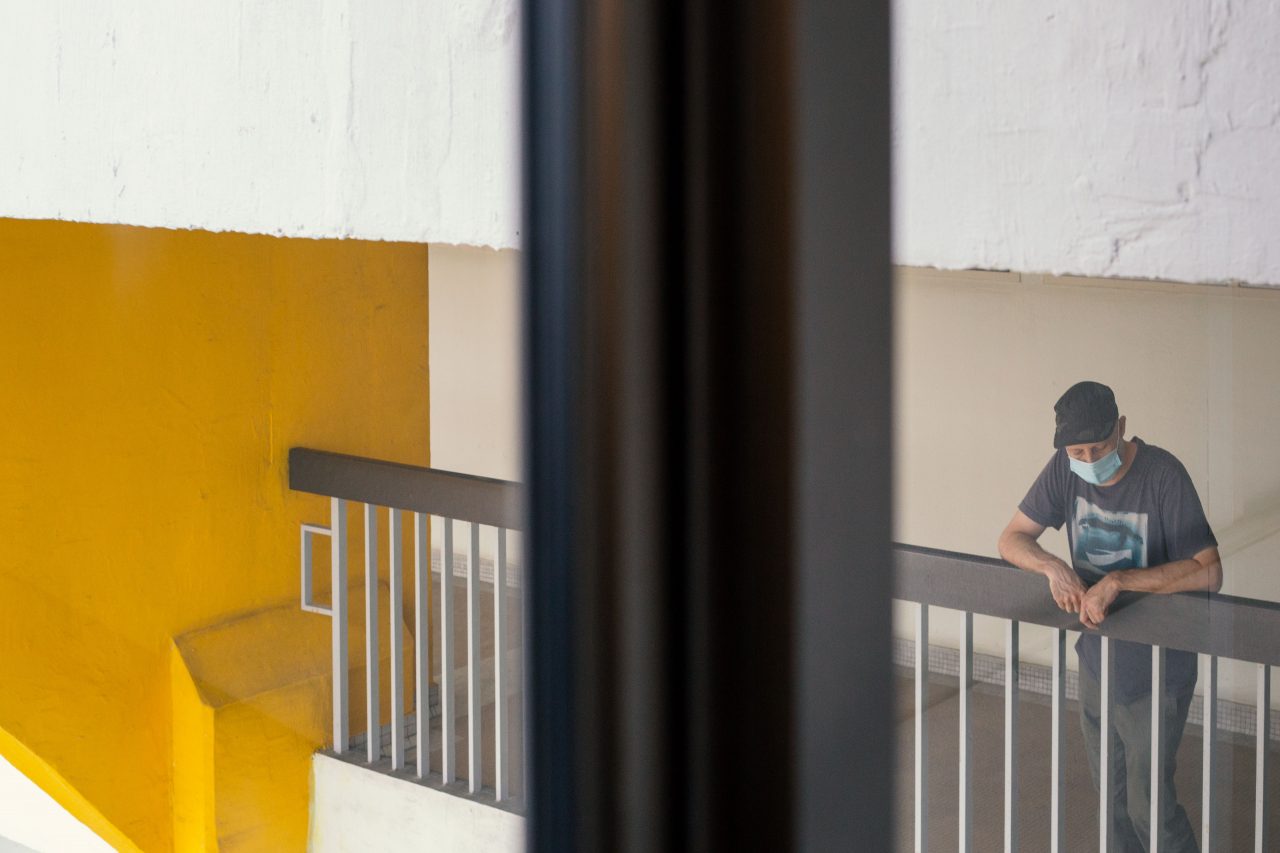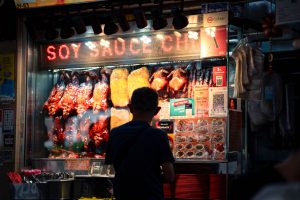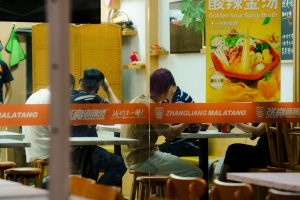With the recent announcement that Golden Mile Complex (GMC) was to be gazetted for conservation by the Urban Redevelopment Authority (URA), Singaporeans reacted with a curious mix of nostalgia, apathy, and resentment.
“This ugly building you save, but you tear down the old National Library? Pui.”
At the other end of the spectrum, GMC’s advocates were happy “a building like this can still exist in Singapore for a little while longer.”
Even in this upbeat scenario, GMC is like Ah Ma sitting in a wheelchair in a neglected corner of the room—for sentimental reasons only.
But I can’t really blame Singaporeans for their lack of excitement. Having said goodbye to so much of our iconic architecture—the old National Library, the National Theatre, Rochor Centre, Dakota Crescent, and Pearl Bank Apartments—many of us have decided it’s safer not to care, in order to avoid getting hurt again.
In our cynicism, however, I think we’re missing out on an opportunity to reimagine GMC’s future. There’s also a lot more than Golden Mile that’s riding on this conservation: the success (or failure) of it may determine how the Singapore government looks at future conservation efforts like People’s Park Complex and other heritage buildings.
Instead of wasting our time debating the aesthetic merits of Brutalist architecture, Singaporeans should view GMC’s conservation as our first real shot at breaking out of the old model of en-bloc and demolition, towards a more sustainable path to economic development.

GMC Tells A Familiar Story of Singaporean Society
A designer friend put it best when she said: “GMC feels like a dystopian building. The rich live on top, the working class in the middle, and the slums at the bottom.”
When Golden Mile Complex first opened in 1973, the building was intended as both an upscale development and a fully-integrated community, one that reflected our founding generation’s aim of social harmony.
At GMC, a professional in Singapore could conceivably go to work by taking the lift from his residential apartment down to his office. After work, he would do his grocery shopping or chat it up with the coffee shop owners downstairs.
This is not the GMC that exists today.
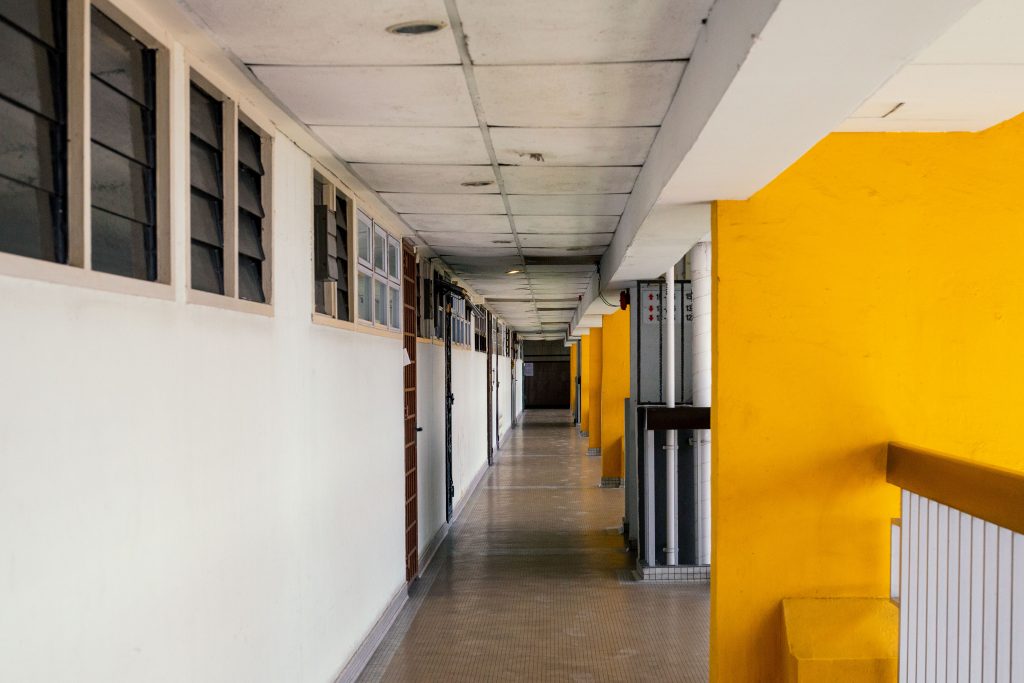
As any objective observer can see, the building feels more segregated now, with scenes that could’ve been lifted straight out of Bong Joon Ho’s 2020 Oscar-winning film Parasite.
Poor maintenance has plagued the building, driving out the original community in favour of Singapore’s Thai community and the quote-unquote ‘seedier’ elements of society. The situation got so embarrassing that ahead of the SG50 Celebrations, a new coat of paint was applied to its facade.
Stepping back, today’s GMC can be more accurately described as a microcosm for what’s happening in Singapore and around the world: systems that are crumbling amidst rising economic inequality and social unrest, where governments apply bandages that only manage to gloss over deeper, structural issues.
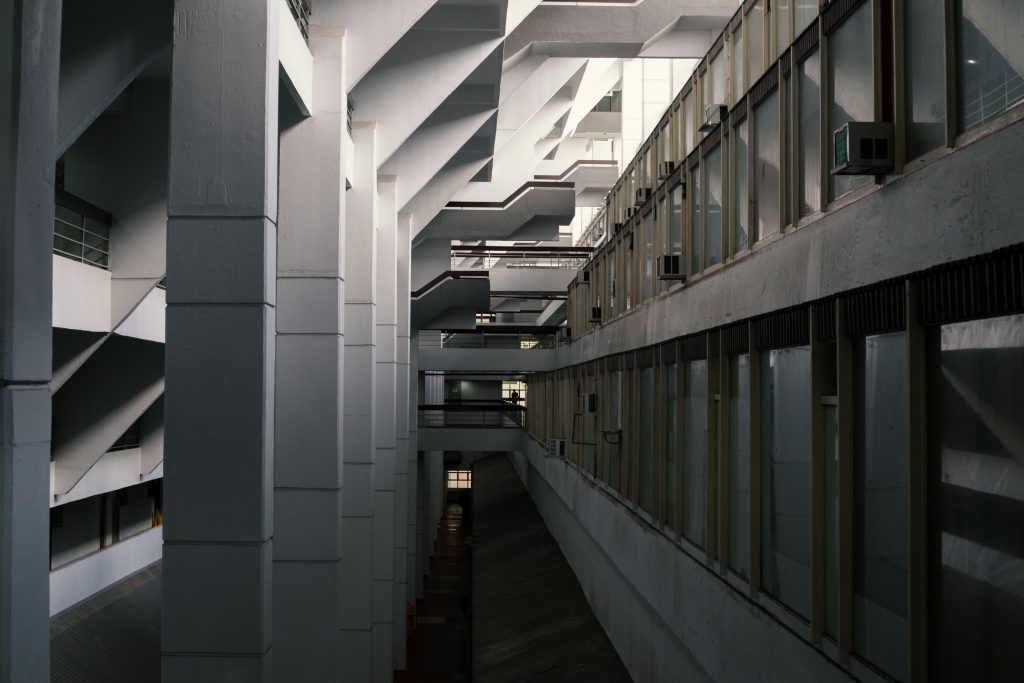
Was the Past Decade A Story of Progress or Decline?
How do GMC’s current residents feel about the building’s decline?
To find out, I was invited up to the 15th floor by Tom, 43, a bar owner and expat from Scotland.
Having arrived in Singapore in 2003, Tom has been living in Golden Mile Complex for the past seven years. The rent is S$3,600 per month, which he splits with two other housemates for the 3 bedroom, 3 bathroom unit.

Of course, Tom is not the owner of the unit. Like most expats who have not yet obtained their PRs, he’s a tenant. The owner had long since moved out, to escape, I’m guessing, some of the problems that Tom has had to deal with.
“In the beginning I had to deal with some pretty intense rodent and cockroach infestations,” Tom told me.
“The resident levels used to be centrally air-conditioned, until residents voted to shut it down. The air-con vents basically became rat and cockroach staircases.
“They were in the ceilings. They were all over the house.”

While the rodent infestation is now behind him, I could still spot traces of disrepair. Upon entering the unit, I saw a large bucket in the hallway, as the ceiling was springing a leak. Residents have had to deal with chronic pipe issues, made worse by the monsoon rains.
The root cause of these maintenance problems is the broken incentive structure inherent in private strata-titled structures like GMC. The mixed-use ownership means that it’s more difficult for the many stakeholders to agree on major renovations or maintenance. Finally, the looming prospect of an en-bloc incentivises owners to do the bare minimum when it comes to making essential repairs.
To the government’s credit, the URA has introduced a set of new incentives for developers to try to reverse this trend, including allowing additional floors to be built (30 storeys total), and an option to top-up the 99-year lease. Whether this will be enough to attract the right developer (at the right price) remains to be seen.
But dealing with these maintenance issues has its compensations too. For starters, there’s the view. And what a view!
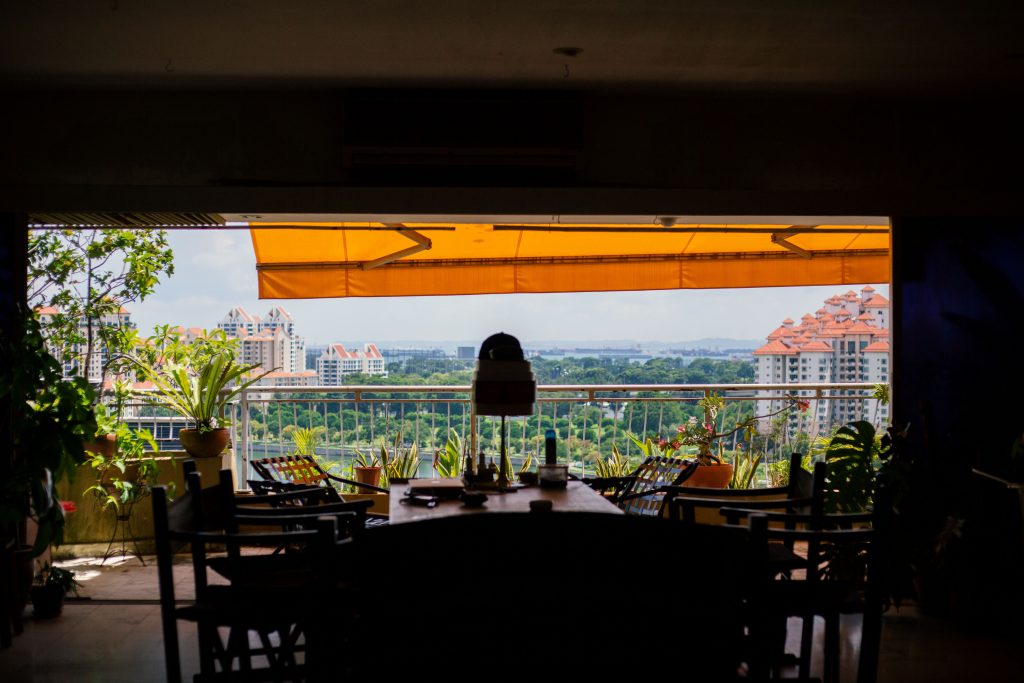
When I look out from Tom’s expansive balcony, I can see the product of Singapore’s past decade of construction. The shoreline used to be closer, until it was moved further out by land reclamation. Over the years, they came with cranes and demolition trucks, bringing in tonnes of sand, rocks and cement, to fill in the horizon where the sea used to be.
All of this is taking place in the backdrop of rising living costs and newly constructed homes that keep shrinking.
For the Golden Mile residences—at least for now—space is not a problem. Each unit is freaking huge, at least 2-3x larger than your standard 5-room HDB flat.
For Tom, GMC has been an oasis of calm in this city.
“People say Singapore is boring. I don’t agree,” he said. “This city has many layers. GMC certainly debunks the myth that it’s a clean and sanitized place.”
But after seven good years, he’s finally moving out in March 2021. The unit is being sold to a young Singaporean couple, who were attracted by the character of GMC, and made the risky move of starting a life in the unit amidst the uncertainty of conservation.
“I’m glad this unit is going to them,” said Tom. “Because they were looking for a home rather than an investment. Typically, stuff here is not built to last. It’s being built for the next cycle of en-bloc.”
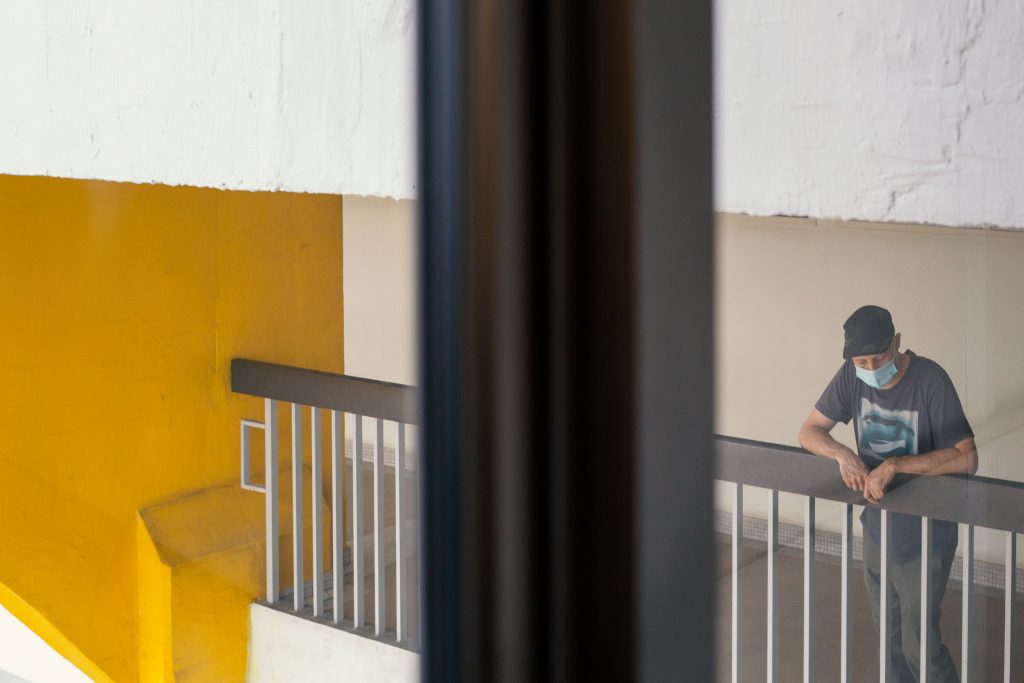
What Do Creatives, Expats and Sex Workers Have in Common?
From the residential tower, I took the lift down to the mid levels (floors 4-9), where the office tenants work.
Places like GMC seem to attract a specific demographic of workers. They are either legacy law offices with ownership stakes in the original building, or they’re younger creatives, foreigners, and sex workers attracted by the cheap rent that comes with an impending en bloc.
Picture the businesses at a Strata mall. And the tenants of the old Pearl Bank Apartment. Mix the two together, and you get GMC.

One thing artists, foreigners, and sex workers all have in common is that they are all marginalised groups in Singapore. None of them really feel welcome or like they belong in this city.
Hence, they move from one cheap rental unit to another, trying to create a community of their own. That is, before the communities they build eventually get displaced by a sleeker and more buttoned-down crowd.
“Maybe I can offer a more positive spin on that,” said Leong Hon Kit, who with his colleague Si Jian Xin are the two co-founders of the Wynk Collaborative, a spatial design agency. “Let’s say that by moving here, we introduce other Singaporeans to the hidden potential of these buildings.”
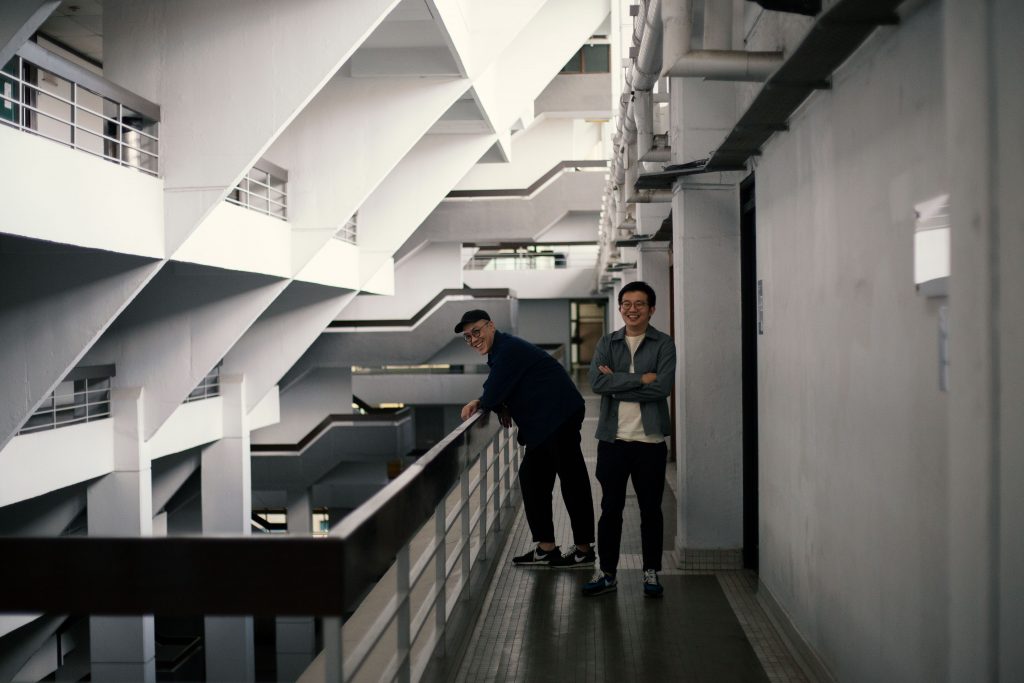
Spin it any way you like, but both Hon Kit and Jian Xin admit that higher rents means that they, like other creatives in the building, will likely not be part of GMC’s future.
“But I think culture is never static, right?” said Hon Kit. “It’s not necessarily a bad thing that the edginess and seediness [of GMC] goes away. Something else will take over.”
So would it be considered ‘cultural progression’ if GMC becomes another Ion Orchard?
Jian Xin demurred. “It would certainly be … uh … a change.”
“The best case scenario is that an enlightened developer comes along, like they have in Europe. Firms that specialise in renovating historically significant buildings.”
But does such a White Knight developer exist in Singapore? We all smiled at the idea.
At this point, I launched into a half-hearted defense of Singapore’s developers. What if local developers are just a reflection of the market and the Singaporean consumer? What if the majority of Singaporean families actually aspire to live in cramped glass condos and shop at Ion Orchard?
“Like Steve Jobs said, customers don’t know what they want until we show it to them,” countered Hon Kit.
“Okay, so who’s the Steve Jobs of Singapore?” I asked. “Does he exist? Can he exist here?”
We all exchanged looks around the table, before bursting into laughter.
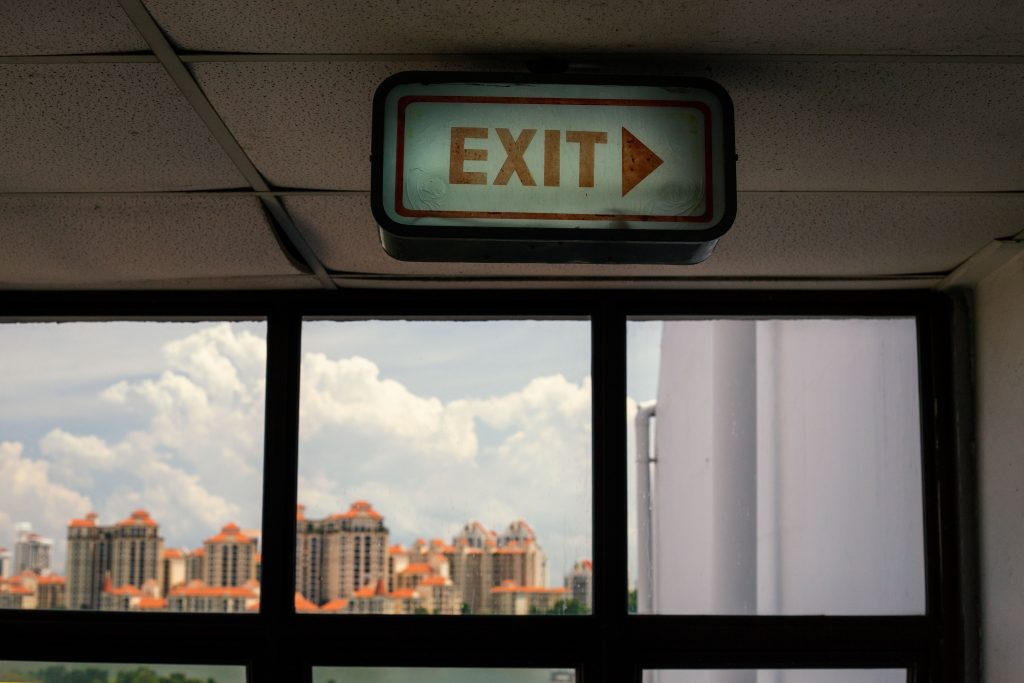
Little Bangkok Will Take Casualties
To complete my tour of GMC, I proceeded down to the atrium that most Singaporeans know as Little Bangkok, with the Thai supermarket on the second floor, the mookata restaurants, and the siam dius at B1.
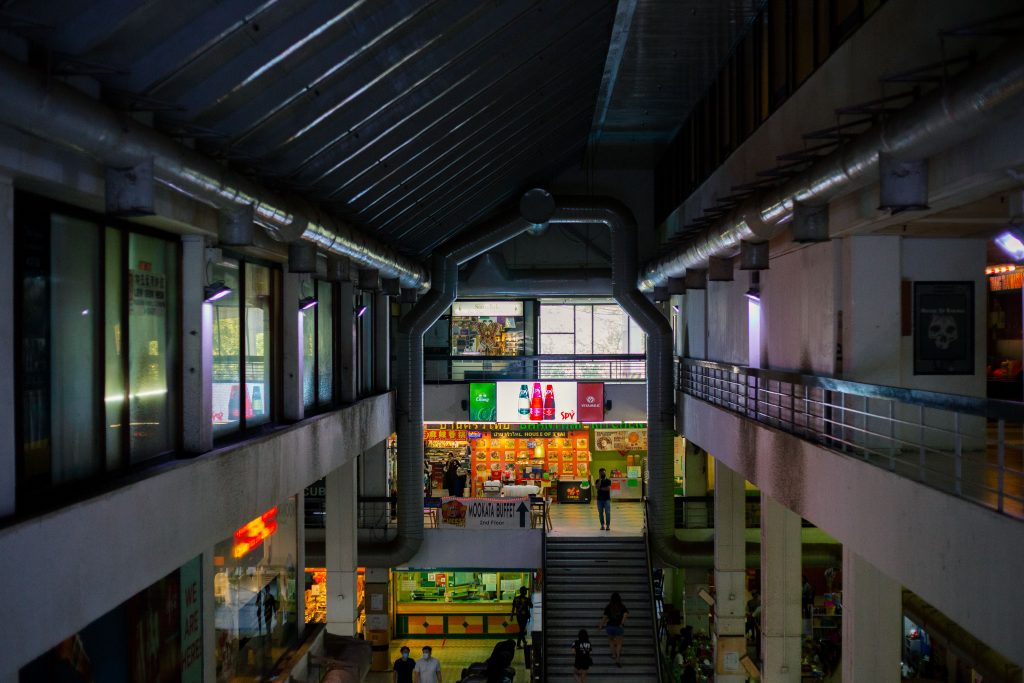
But I’m not here to visit those places. Instead, I’m trying to solve one of the greatest unsolved mysteries in Singapore: why some Thai amulet shops in GMC are more popular than others.
This brings me to Siam.Ink, arguably the most popular shop in GMC, run by its owner Chris Tan. It was one of the first amulet shops that opened in GMC over a decade ago.
Every Saturday, the shop always has a long line outside its door. When I tried asking the customers waiting in line why they preferred Chris’s amulets, they were all evasive, giving only vague answers.
So I decided to go straight to the source. From our brief conversation, Chris told me that he had an exclusive distribution arrangement with a master in Thailand who makes each amulet, individually, by hand. This was what separated his products from the other mass produced amulets sold at other shops.
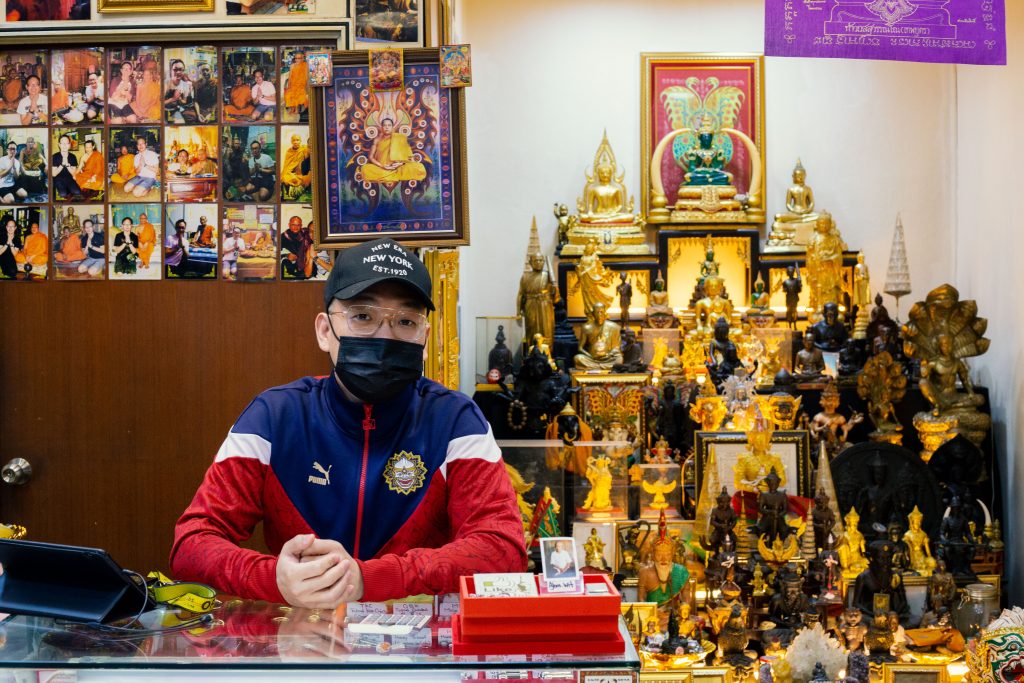
When I asked about the future of Little Bangkok after the news of the conservation, Chris was ambivalent.
“Things are always changing in Singapore,” he said. “But if they change things too much here, GMC will lose its character. Little Bangkok won’t be Little Bangkok anymore.”
In fact, every expert I’d spoken to for this article painted a grim picture of Little Bangkok’s future. Conservation or no, the rents at GMC had been artificially suppressed due to poor building maintenance. Even the most benevolent developer will have to raise the rent.
Perhaps at the heart of the Thai community is the Thai supermarket. Thai people can always cook Thai food at home, but the ingredients and produce that the supermarket offers simply can’t be found anywhere else in Singapore.
I asked Chris whether he’s worried about the impact that changes to Little Bangkok would have on his business. He shook his head. His business was future-proof.
“No, I host regular Facebook Lives now. I’ve been interviewed by major media outlets. More importantly, my customers know that what I sell actually works. Otherwise, why would they keep coming back?”
To conclude our chat, I confided in Chris that I’m also struggling with something. Can an amulet help me find the answer?
“That depends,” he said with a smile, “on what you’re looking for.”

Hello, Goodbye
I’m looking for hope among the ruins of this last decade of progress.
Because I’m tired of seeing the places I love disappear, one by one. If nostalgia truly is the most powerful drug, then it must be one of the most worthless drugs imaginable. It prevents us from seeing things clearly. It leads us to worship stagnation and decay, where leaky plumbing and toilet dungeons evoke Wes Anderson’s The Grand Budapest Hotel instead of a wake-up call.
I’m tired of seeing buildings and communities get turned into the most unimaginative forms of what they can be.
If traditional developers lack the courage, then the onus is on every one of us to offer up—no, insist—on supplying the creative ideas necessary to rejuvenate our dying industries.
Sounds too idealistic? You’re probably right. But I’d rather go down fighting than to sit passively by as everything that’s unique about this city fades away.
So there you have it. Thanks for coming to my TED talk.
Whether GMC will represent, like Dr. Yeo Kang Shua said in his CNA op-ed, a ‘paradigm shift’ for Singapore’s conservation efforts, or a fluke in Singapore’s incessant march towards greater profitability, will be entirely up to us.
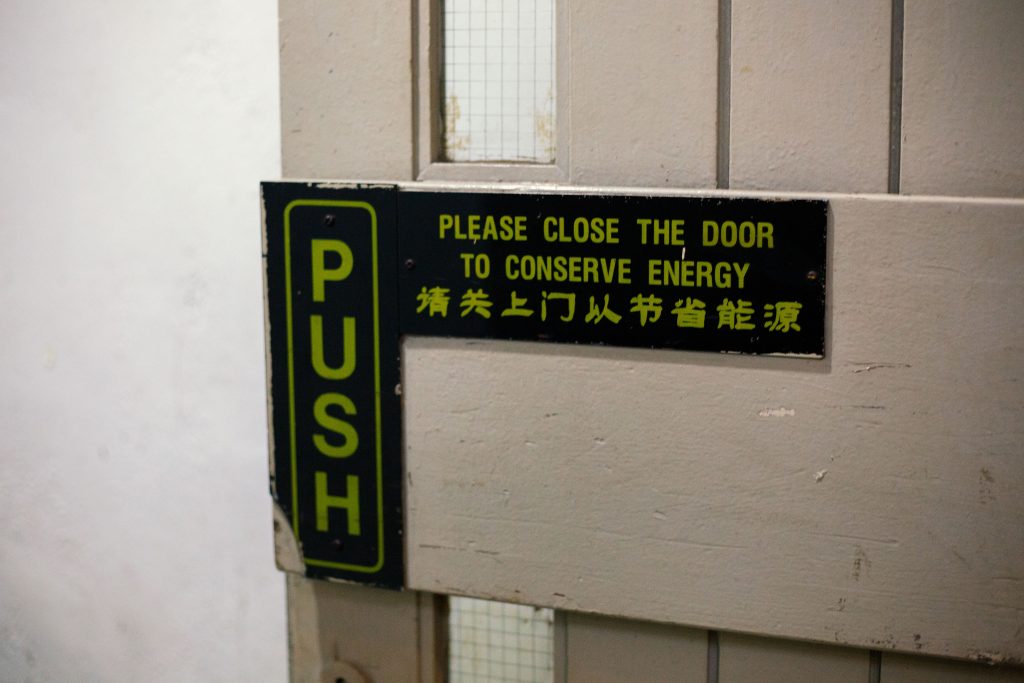
But allow me to conclude with a pitch by Ho Weng Hin, Founding Partner of Studio Lapis and member of DoCoMoMo Singapore, one of the grassroots advocacy groups who played an integral part in GMC’s conservation. Among all the experts I spoke to, Weng Hin’s pitch managed to inspire a bit of hope in this cynical and hollow heart:
“If I could pitch the value of GMC differently, it’s actually about preserving the spirit of the times. Of Singapore in the 60s and 70s, where we could produce a building of such complexity and magnitude from scratch. None of the builders, planners and architects had ever attempted something like this before.
GMC was a reflection of an honest, almost naive, idealism of the age. Singapore had just been unceremoniously ejected from Malaysia. We were at a watershed moment. Do we dwindle into oblivion? Or should we try to create something new out of our challenging circumstances?”
Even as a layperson, these values and spirit of the times speak to all Singaporeans. And once it’s gone, it can’t be replicated.
We live in a different world now. Singapore is a different society. The only thing that remains are the physical structures that can still tell that story.”
Of who Singaporeans were, and who they can still be.

